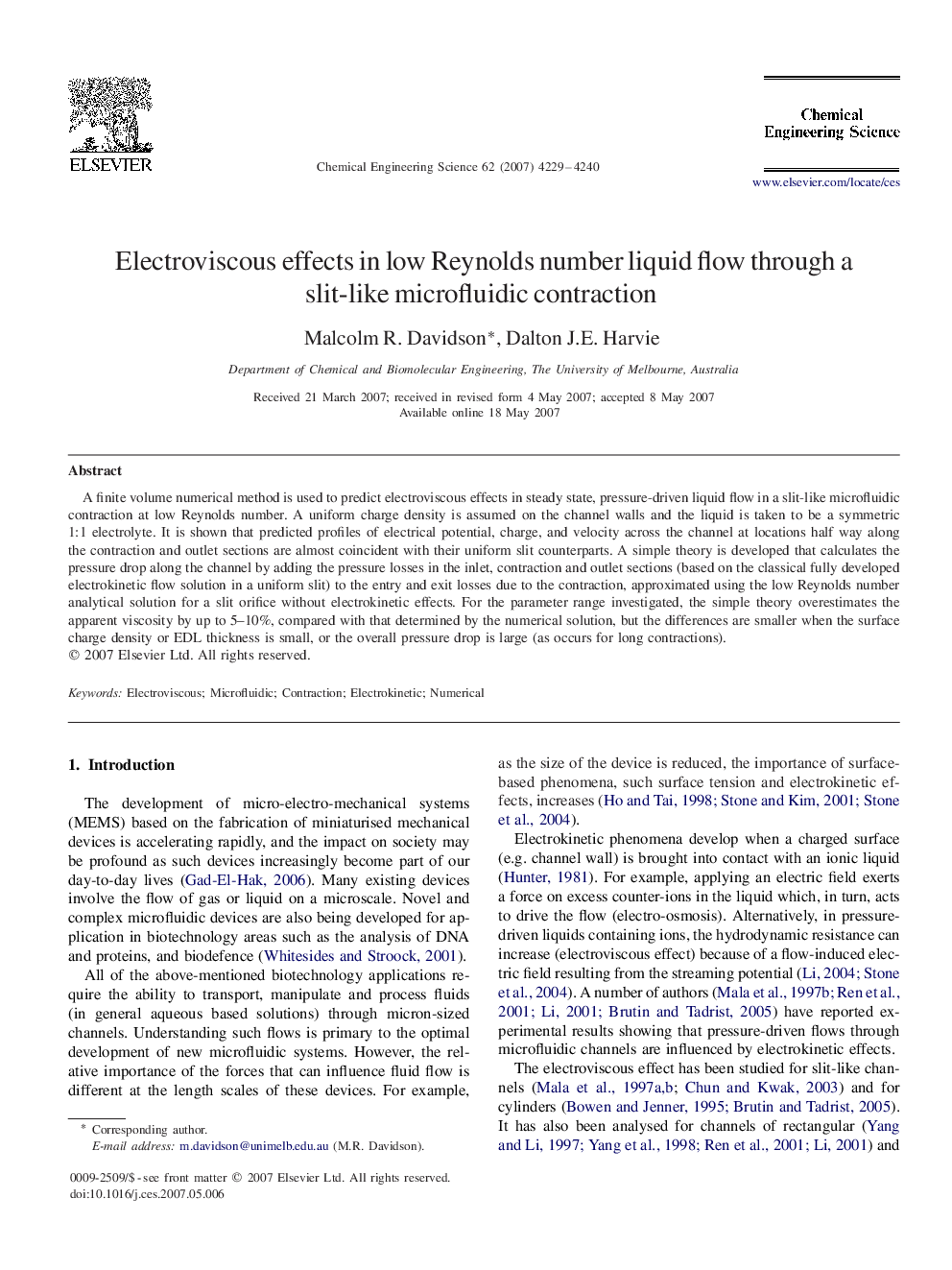| Article ID | Journal | Published Year | Pages | File Type |
|---|---|---|---|---|
| 158764 | Chemical Engineering Science | 2007 | 12 Pages |
A finite volume numerical method is used to predict electroviscous effects in steady state, pressure-driven liquid flow in a slit-like microfluidic contraction at low Reynolds number. A uniform charge density is assumed on the channel walls and the liquid is taken to be a symmetric 1:1 electrolyte. It is shown that predicted profiles of electrical potential, charge, and velocity across the channel at locations half way along the contraction and outlet sections are almost coincident with their uniform slit counterparts. A simple theory is developed that calculates the pressure drop along the channel by adding the pressure losses in the inlet, contraction and outlet sections (based on the classical fully developed electrokinetic flow solution in a uniform slit) to the entry and exit losses due to the contraction, approximated using the low Reynolds number analytical solution for a slit orifice without electrokinetic effects. For the parameter range investigated, the simple theory overestimates the apparent viscosity by up to 5–10%, compared with that determined by the numerical solution, but the differences are smaller when the surface charge density or EDL thickness is small, or the overall pressure drop is large (as occurs for long contractions).
